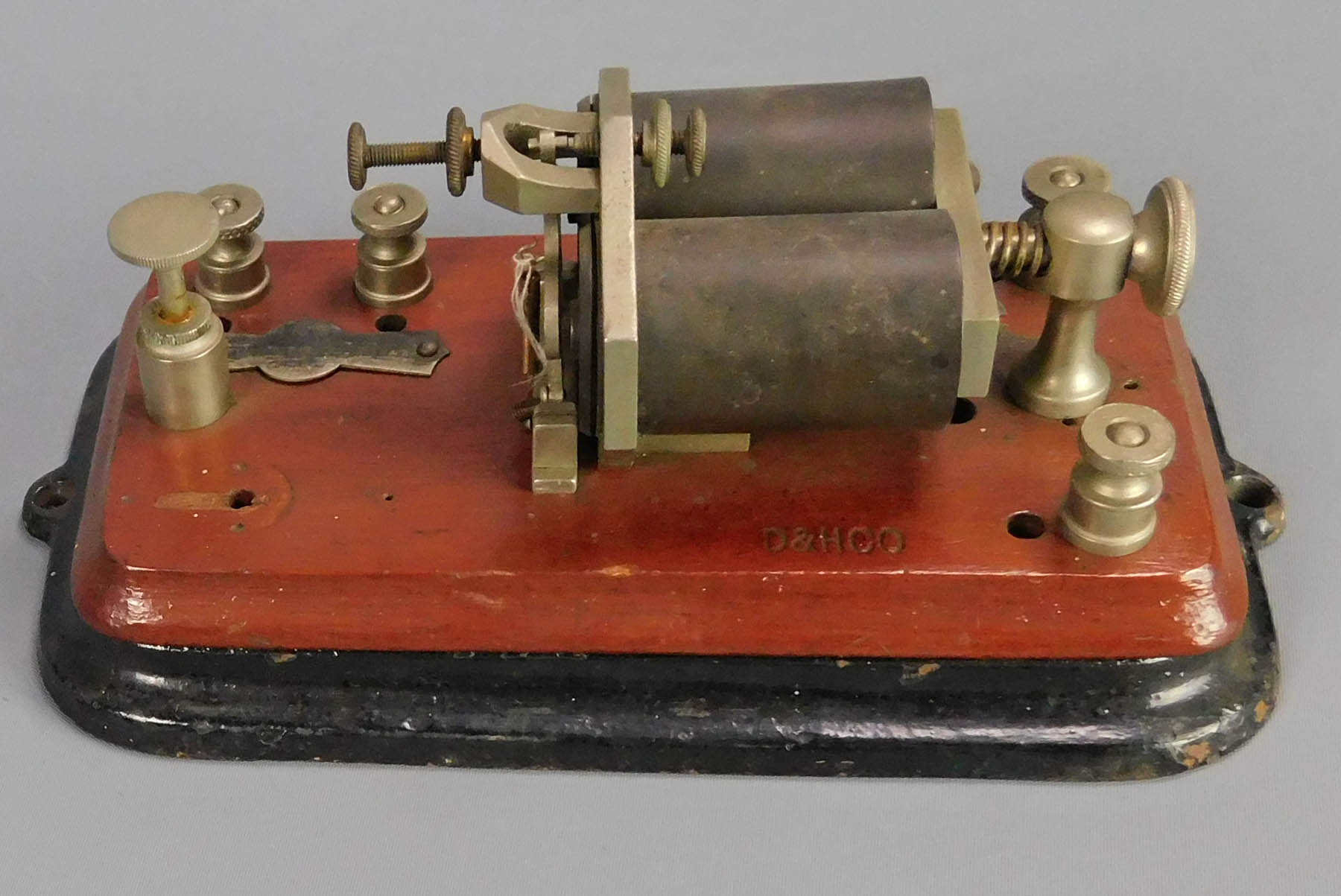Locomotives / Technology

J.H. Bunnell and Company
ca. 1890
Telegraph relays amplified electrical signals in a telegraph line. Telegraph messages traveled as a series of electrical pulses through a wire from a transmitter to a receiver. Short pulses made a dot, slightly longer pulses a dash. The pulses faded in strength as they traveled through the wire. A relay detected a weak signal and used a battery to strengthen it so the receiver would operate. The telegraph needed the right of way that the railroads provided, and the railroads needed the telegraph to coordinate the arrival and departure of trains.
Prior to 1851, the U.S. system was single-tracked, and trains ran on a time-interval system. Granville Woods developed the railroad telegraph in 1887. This device transmitted messages through static electricity between moving trains.
Wood, iron, brass. H 9.1, W 12.5, L 22.5 cm
Steamtown National Historic Site, STEA 2687